Zanussi ZH6010W.I Handleiding
Bekijk gratis de handleiding van Zanussi ZH6010W.I (5 pagina’s), behorend tot de categorie Afzuigkap. Deze gids werd als nuttig beoordeeld door 45 mensen en kreeg gemiddeld 4.7 sterren uit 23 reviews. Heb je een vraag over Zanussi ZH6010W.I of wil je andere gebruikers van dit product iets vragen? Stel een vraag
Pagina 1/5

Istruzioni per l'uso
Manual de instrucciones
Manual de instruções
Operating instructions
Mode d'emploi
Bedienungsanleitung
Gebruiksaanwijzing
Cooker hood
Hotte
Dunstabzugshaube
Dampkap
Cappa
Campana
Exaustor
ZH 6010 ZH 6020
ZH 9010 ZH 9020
Dir. 89 / 3 36/CE E
4324138 - 03/95

This cooker hood is suitable for extraction (ducted) or recirculation (re-
cycling).
All cooker hood perform better when used in evacuation version. Du-ring
winter time it may be convenient to use the hood in the recycling version
to avoid heat loss from the kitchen.
Cette hotte peut être utilisée en version évacuation extérieure (aspirante)
ou en version recyclage (filtrante). Les meilleures performances sont
obtenues en version évacuation. En hiver, il est toutefois préférable d'utiliser
la hotte en version recyclage pour éviter les déperditions de chaleur.
Die Dunstabzugshaube ist für beide Betriebsarten geeignet, wofür Sie sich
entscheiden, hängt vor allem von den räumlichen Verhältnissen in Ihrer
Wohnung ab.
De wasemkap kan als afzuigkap (afvoer naar buitenshuis) of als cirku-
latiekap (door middel van koolstoffilter) gebruikt worden. In de winter kan
het wenselijk zijn de kap als cirkulatiekap te gebruiken; de presta-tie is dan
wel aanzienlijk minder dan bij gebruik als afzuigkap.
Questa cappa può essere usata in versione aspirante (evacuazione esterna)
o filtrante (riciclo interno). Le migliori prestazioni si ottengono nella versione
aspirante: tuttavia nel periodo invernale può essere con-veniente utilizzare
la cappa in versione filtrante per evitare dispersioni di calore.
Esta campana puede utilizarse en dos versiones: aspirante (evacuación
externa) o filtrante (reciclaje interno).
En versión aspirante se obtiene un funcionamiento óptimo.
De todas maneras, durante el invierno, es preferible usar la campana en
versión filtrante para evitar pérdidas de calor.
Este exaustor pode ser utilizado na versão exaustão (aspiração) ou na
versão reciclagem interna (filtrante). Os melhores resultados obtêm-se na
versão exaustão externa. No entanto é aconselhada a utilização do exaustor
na versão reciclagem interna durante o inverno para evitar perdas de calor.

1 - SAFETY REGULATIONS
1.1- The cooker hood ducting must never be
connected to central heating flues, radia-
tors or water heaters, etc.
1.2- Before connection to the mains supply, en-
sure that the mains voltage corresponds
to the voltage on the rating plate inside
the hood.
1.3- Connect the hood to the mains supply, in-
terposing a double pole switch.
1.4- Ensure that the electric plant allows the
hood to be correctly earthed.
1.5- For safety, when installed, the hood must
be positioned at least 65 cm above a coo-
king appliance.
1.6- Never do flame cooking under a hood.
1.7- Never leave frying pans unattended during
use as overheated fats and oils may catch
fire.
1.8- Before carrying out any kind of mainte-
nance or cleaning, disconnect the hood
from the mains supply.
2 - INSTALLATION
INSTRUCTIONS
Some installation systems require the opening
and removal of the metal grille panel.
2.1- Instructions for opening and removing the
metal grille panel
To open the grille panel, press inwardly on
the two slider catches at each side of the grille
panel and the grille will pivot down. To remove
the metal grille, pull forward on the right hand
side wille be released from the slot in the side
of the casing.
2.2- Wall cabinet fixing
a - Predrilled wall cabinet: fix the hood onto the
wall cabinet base panel using the four screws
4.2 x 45 mm (supplied with the fixing kit).
It is not necessary to open the metal grille.
b - No predrilled wall cabinet:
b.1 - If the hood is provided with a paper fixing
template, follow the instructions.
b.2 - If the hood is not provided with a paper
fixing template, position the hood on the
wall cabinet base panel and pilot drill
the 3.5 x 16 mm screws (not supplied
with the fixing kit) from the inside onto
the wood.
2.3- Wall mounting
a - Drill two Ø 8 mm holes on the wall using the
paper template, insert two rawl plugs and two
4.2 x 44.4 mm screws leaving 5 mm
untightened. Open the metal grille panel, hook
the hood on and fully tighten the screws.
b - If the hood is not provided with a paper fixing
template, drill two Ø 8 mm holes (see draw.),
insert the plugs and screws, proceeding as
directed under paragraph a.
c - For wall mounting using wallbrackets
(optional), follow the instructions of the fixing
template.
d - Pay attention to the safety regulation of point
1.5.
2.4- Choice of operating version
a - External evacuation version
To check that the hood is set up for evacuation,
open the grille panel and make sure that the
conversion lever or the change-over knob on
the centrifugal unit is in the DUCTING position.
The charcoal filter is not required.
For ducting to the outside, the hood is sup-
plied with a rear and top outlet. A flange spigot
of 100 mm diameter (120 mm in certain
models) is usually fitted on the top outlet and
a blanking plug on the rear outlet. If you
choose to duct the hood from the rear of the
casing, you should invert the position of the
flange and of the blanking plug.
Pay attention to the safety regulation of point
1.1.
b - Internal recirculation version
To check that the hood is set up for recycling,
open the grille panel and make sure that the
conversion lever or the change-over knob on
the centrifugal unit is in the RECYCLING
position. The charcoal filter is to be fitted. To
fit the charcoal filter, support the filter with
one hand and turn the thumb screw through
the centre of the charcoal filter. If the filter is
of the interlocking type, turn the filter clockwise.
The hood can remain connected to the outside.
2.5- Electrical connection
Can be made as follows:
a - If the cooker hood is supplied with a plug, it
can be connected to a nearby socket provided
with earthing.
b - If the cooker hood is without plug, arrange for
a proper connection to the electric plant
provided with earthing.
c - Pay special attention to safety regulation 1.2,
1.3 and 1.4.
3 - OPERATION
3.1- Controls are located on the right hand side of
the front to operate worktop illumination and
select the most suitable working speed for your
cooking. To increase the area of extraction,
the glass visor should be pulled open. The
top speed should be used when frying or
cooking foods with strong odours while a lower
speed can be used for normal cooking. To
obtain the best performance from your hood,
turn it on before you start cooking and leave
it running for a few minutes after your cooking
is over to clear the air.
3.2- Pay attention to safety regulations 1.6 and 1.7.
4 - MAINTENANCE
AND CLEANING
Regular maintenance and cleaning will en-sure
good performance and reliability, while
extending the working-life of the hood. Special
attention should be reserved to the grease
filter and to the charcoal filter (recy-cling
version).
4.1- Grease filter
This retains the solid grease particles and can
be supplied in different types. It is fitted onto
the reverse side of the metal grille panel.
Maintenance of the grease filter varies
according to the type used.
a - Whatever type of filters used, the filter is easily
removed from the grille by pushing the metal
wire clips to one side and removing.
b - Thin synthetic filter (1 mm thick). It should not
be washed and should be replaced every two
months. If the filter is provided with a saturation
indicator, replace when:
b.1 - The violet colour of the dots, which are
visible through the metal grille, is spread
over the whole surface of the filter.
b.2 - The red colour of the stripes, which is
not visible through the metal grille when
the filter is clean, becomes visible from
the outside of the metal grille.
c - Foam synthetic filter (approx. 10 mm thick). It
should be washed every two months in hot
water using mild detergent and should be
squeezed dry, not wrung out. Replacer after 5
or 6 washings.
d - Multi-layer metal filter. It should be washed
once a month in hot water using mild detergert
or liquid soap. It can be washed in a dish-
washer. It should not be bent and should be
left to drain dry.
WARNING: An excess of grease in the filter
not only would affect the performance of the
hood, but is is also a possible fire risk. We
strongly recommend therefore to clean and
replace filters in accordance with the manu-
facturers instructions.
4.2- Charcoal filter
The charcoal filter is a chemical filter to be
used only when the hood is in the recycling
position. To replace the charcoal filter, open
the grille and remove the thumb screw through
the centre of the charcoal filter. If the filter is
of the intelocking type, turn the filter
anticlockwise. Replace by reversing the
operation. For a good performance replace
the charcoal filter on average every three
months.
4.3- Worktop illumination
If a lamp fails to function at any time, open
the metal grille panel and check that the lamp
is fully screwed into the holder. When changing
the lamp, an identical replacement must be
fitted to ensure a safe working of the hood.
4.4- Cleaning
The metalwork should be cleaned regularly,
at least once a month, using mild household
cleaner and polish. Never use abrasives.
4.5- For all operations from point 4.1 to point 4.4
and in particular for point 4.3, pay spe-cial
attention to the safety regulations 1.8.
Product specificaties
| Merk: | Zanussi |
| Categorie: | Afzuigkap |
| Model: | ZH6010W.I |
Heb je hulp nodig?
Als je hulp nodig hebt met Zanussi ZH6010W.I stel dan hieronder een vraag en andere gebruikers zullen je antwoorden
Handleiding Afzuigkap Zanussi

4 December 2024

4 December 2024

16 Juni 2023

5 Juni 2023

31 Mei 2023

25 Mei 2023

19 Mei 2023

16 Mei 2023

14 Mei 2023

11 Mei 2023
Handleiding Afzuigkap
- Asko
- AYA
- XO
- Franke
- Twin Eagles
- Freggia
- Conia
- HomeCraft
- Café
- Matrix
- Vitrokitchen
- Gorenje
- Junker
- Electrolux
- Lamona
Nieuwste handleidingen voor Afzuigkap
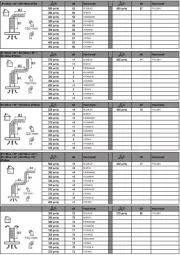
29 Juli 2025
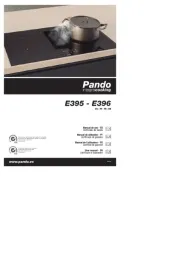
29 Juli 2025

29 Juli 2025
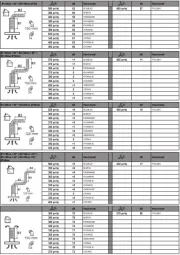
29 Juli 2025
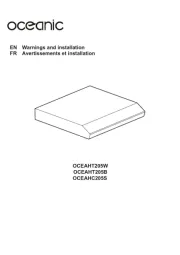
29 Juli 2025
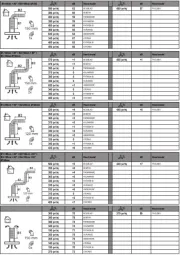
29 Juli 2025
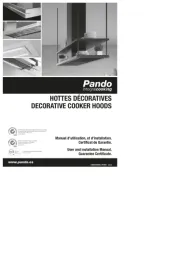
29 Juli 2025
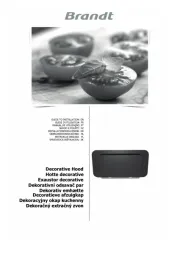
29 Juli 2025
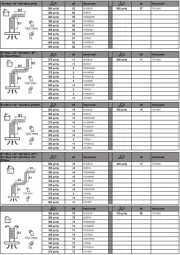
29 Juli 2025
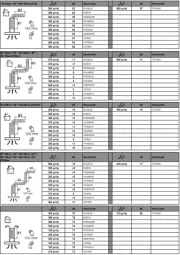
28 Juli 2025